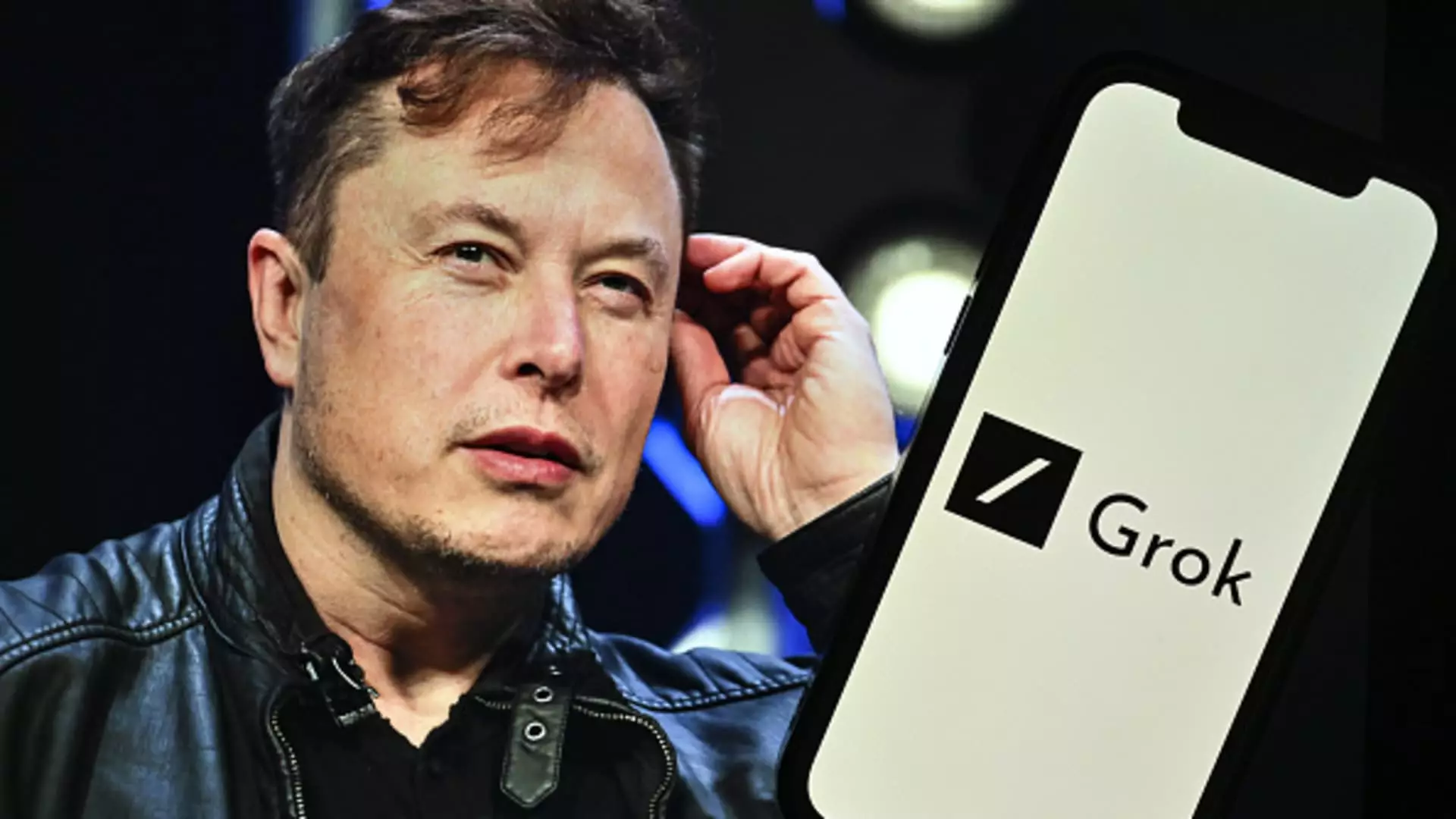Artificial intelligence continues to evolve at a rapid pace, intersecting with various sectors and capturing the attention of tech enthusiasts and industry stalwarts alike. One of the latest entrants into this competitive arena is xAI’s Grok 3, a model that Elon Musk claims surpasses both OpenAI’s renowned products and the innovations from the Chinese company DeepSeek. Unveiled during a live demonstration via Musk’s social media platform, X, Grok 3 is said to exhibit unprecedented capabilities in diverse fields such as mathematics, science, and coding, setting high expectations for its performance and practical applications.
During the hallmark demonstration, Musk wasted no time in expressing his enthusiasm for Grok 3’s capabilities. He emphasized that the model represents an “order of magnitude” enhancement over its predecessor, Grok 2. Such assertions prompt a closer examination of the hallmark features that purportedly enable Grok 3 to outperform its competitors. The xAI team highlighted that Grok 3 excels in reasoning and is capable of self-correction, which potentially positions it favorably against existing offerings within the generative AI market.
Musk’s introduction of “Deep Search” indicates an ambitious move toward redefining how users interact with information. The upcoming product is touted as a “next-generation search engine,” suggesting that xAI is not merely entering the fray of AI chatbots but is also positioning itself within the search engine domain—a field dominated by giants like Google. The planned availability to premium X subscribers along with a separate subscription model for broader web and app access stands as a strategic approach to cultivate a dedicated user base amid intense competition.
While ambitious claims are not uncommon in the tech industry, Musk’s assertions about Grok 3 being “scary smart” require scrutiny against industry benchmarks. He pointed out that internal tests revealed Grok 3 to outperform established models, a statement that teeters on the edge of promotional bias. The testing methodology and source of this data remain crucial for transparency; users and industry experts will want to critically evaluate whether these comparisons truly establish Grok 3 as the superior choice.
Moreover, Musk’s acknowledgment that Grok 3 is still in its beta phase implies that this model, despite its touted benefits, may have some teething problems. Regular updates are promised to mitigate initial inconsistencies, but early adopters might face challenges that could impact their overall experience. The notion of continuous improvement is a double-edged sword; while it encourages innovation, it also raises questions regarding stability and user satisfaction at launch.
The competitive dynamics within the AI landscape underscore a pivotal moment in technological advancement, with Musk’s xAI emerging as a significant player. Historically, Musk has underscored concerns regarding AI safety and ethical governance. Yet, his move to create xAI invites scrutiny regarding his motivations and the potential implications of releasing a powerful AI model like Grok 3 into the wild. Notably, Musk has a complex history with OpenAI, as he co-founded it but later parted ways due to ideological differences. The backdrop of this rivalry adds another layer of intrigue, particularly in light of Musk’s recent efforts to sway OpenAI’s nonprofit parent company with a proposal for acquisition.
Additionally, the competitive pressures posed by models like DeepSeek’s open-source creations remind stakeholders that innovation can arise from various fronts, even as regulations aimed at controlling AI technology intensify. This landscape illustrates that amid technological barriers and geopolitical tensions, advancements can still manifest, provoking ripples that influence strategic decisions made by various companies, including xAI’s investment in expanding its training resources with a boosted GPU cluster.
Grok 3 emerges as a bold claim from xAI, with Musk suggesting it could alter the trajectory of artificial intelligence applications. However, as the dust settles from its unveiling, stakeholders—ranging from potential users to tech critics—will need to monitor its real-world performance against the backdrop of competitive models. The implications of this model’s success or failure could resonate throughout the generative AI ecosystem, shaping future standards and expectations. The continuous evolution of AI technology remains both exciting and daunting, compelling a thoughtful exploration of what the future holds, not only for Grok 3 but for the entire field of artificial intelligence.

